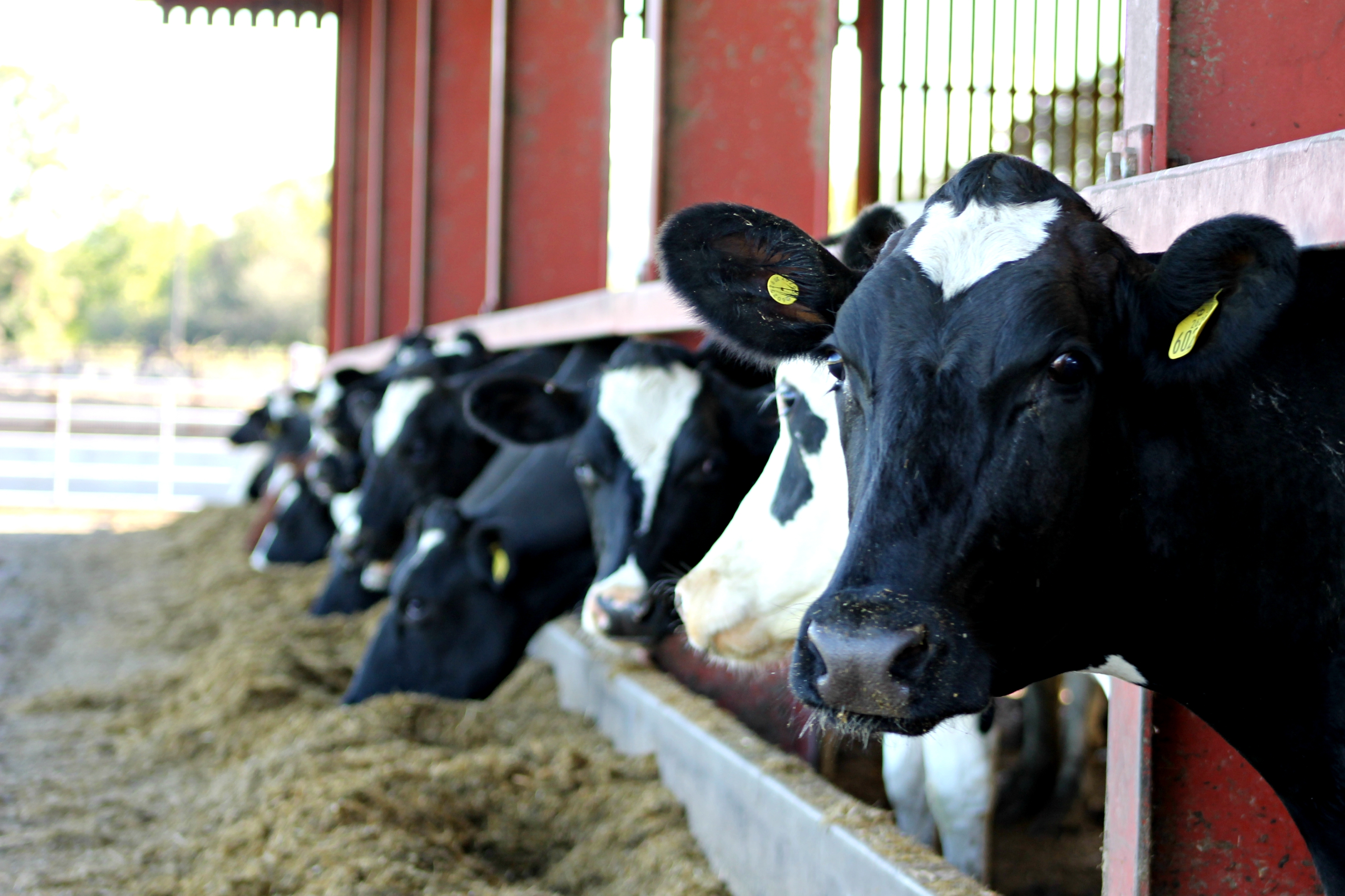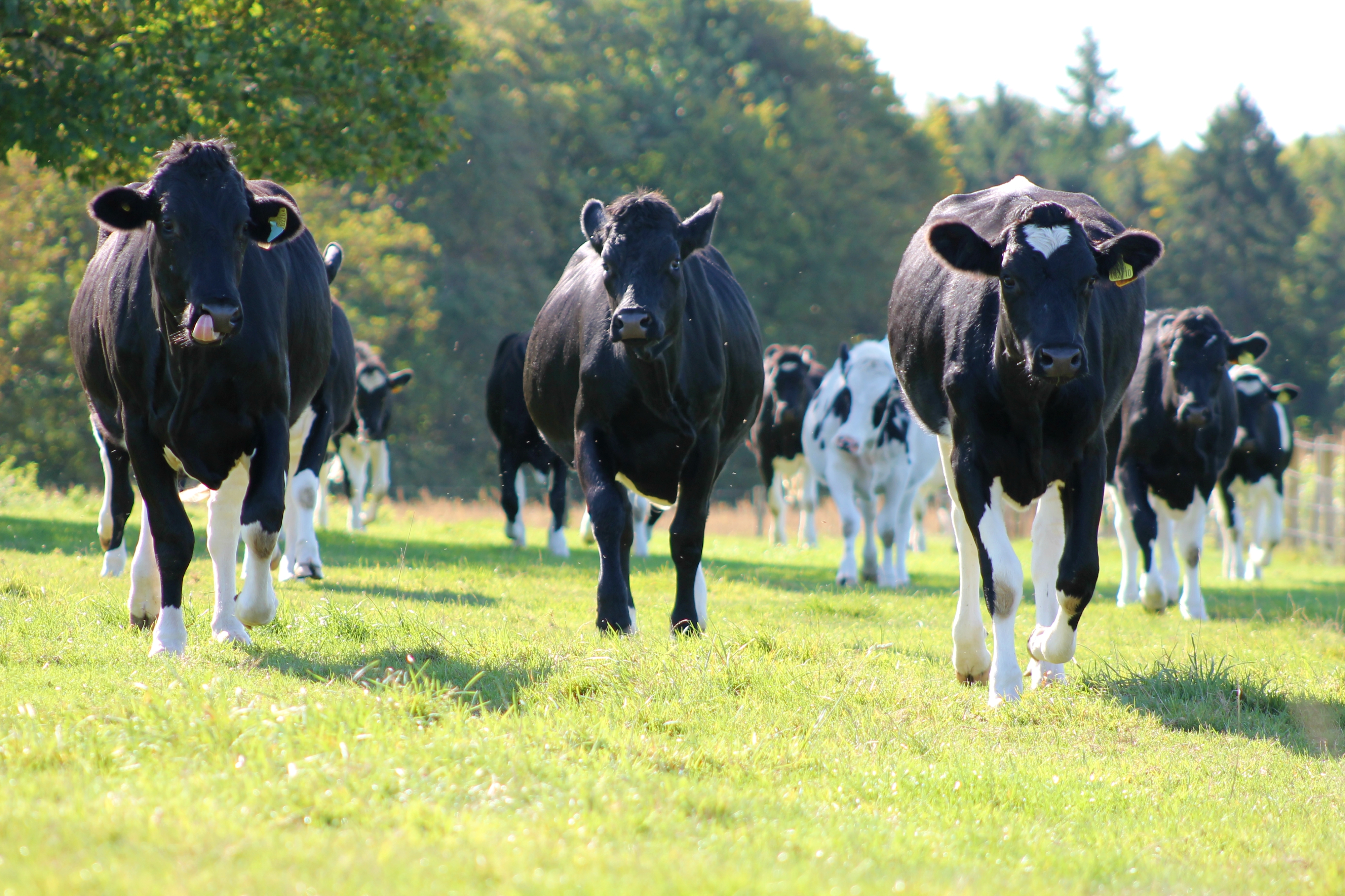
AS A LONG-TERM PRODUCER OF MILK FOR M&S, TIM LOCK IS WELL ACCUSTOMED TO MEETING HIGH STANDARDS IN TERMS OF FOOD QUALITY, ANIMAL WELFARE AND CREATING A GOOD PUBLIC IMAGE OF FARMING.
So, when he was offered the chance to take this a step further, taking part in a trial with Cogent which would see his 200-cow herd switched to sexed female dairy semen, sexed male beef semen and the genomic testing of heifers as part of a mating plan which would improve the herd’s overall genetic profile, he saw little reason not to jump at the chance.
Farming around 1,800 acres on the South Downs at Bury Manor Farm near Pulborough in West Sussex, he says his only hesitation came down to whether his herd’s fertility could be maintained with the switch to sexed semen. “I had tried sexed semen soon after it came out, and for many years I was reluctant to use it again,” he says. “But I’d got back into it a couple of years ago so knew it had improved, so decided to give the Cogent trial a go.”

The trial involved the genomic analysis of the herd’s heifer crop, using Cogent’s Precision DNA, which identifies those with the greatest genetic potential. The best heifers identified through this test would be bred to sexed female dairy semen to produce the herd’s replacements.
“We know these heifers’ genomic indexes are twice as reliable as those we had before which were based on their parent average, so we are hopefully erring on the side of good science,” he says.
He refers to the 65-75% reliability of most genomic indexes compared with parent averages which are closer to 30-40%. This means the genomic index – which is calculated from the animal’s own DNA obtained from a tissue sample taken at the time of ear-tagging – is less likely to change over time than an index based on parent and ancestor information.
“The genomic testing in itself has been an interesting exercise, sometimes identifying animals with good genetics I would never have suspected,” he continues. “But whether they prove to be the best-performing animals, you will have to ask me in a few years’ time!”
Independent industry estimates suggest the process of breeding replacement heifers from the best females will reap worthwhile rewards, with a 200-head herd estimated to make additional profit of around £13,000-£20,000 per year in 10 years’ time (extrapolated from AHDB Dairy figures).

With the herd’s elite heifers earmarked for breeding dairy replacements, the remainder of the heifers are AI’d to sexed male beef using a high genetic merit Angus bull. “Before, we only used a stockbull on the maiden heifers so this has involved a complete change of system,” says Tim.
“When the heifers are out in the summer, we will synchronise them and only give them one insemination before they are run with a sweeper bull. But when they’re housed in winter, we may give them a second insemination with sexed semen. “Although we are a year-round calving herd, we can’t afford to lose any time on the heifers,” he adds.
Meanwhile, all mature cows of two or more lactations are bred to beef while the elite younger animals which are bred to dairy are served on the basis of Cogent’s herd benchmarking tool, PrecisionMAP. “This has been a useful tool,” says Tim.
“We plug in our milk contract – a liquid contract with M&S – and we look at our genetic profile on a dashboard and identify areas for improvement.
“Of course, we want all of the usual traits including better feet, legs and udders, but we also want to improve the uniformity across the herd.
“Cogent select the Holstein bulls which meet our objectives and we stick to it rigidly as we feel it is based on better science.” Genetic improvement across the herd will be a long-term win, but Tim says he is encouraged that his key concern – of losing fertility in the switch to sexed semen – has not been realised.

“My sense is that fertility has neither improved nor got worse,” he says, remarking that the high sperm density SexedULTRA 4M, known for its high fertility, was used for both sexed male and female straws.
This is borne out by the 100-day in-calf rate of 55-57% and the calving index of 373 days, both of which have remained constant during the process of change.
With a herd producing around 9,500 litres, he also praises the team on the farm for its continued excellence in heat detection which is all undertaken by eye.
However, the crux of the new programme is the effect it will have on the herd’s financial performance, combined with its ethical bonus. The benefits in these areas are already proving to be convincing.
“Previously, we were selling black and white dairy bull calves to a local rearer for around £50-60 at about 10 days old,” says Tim.
Now, although he admits to a ‘huge differential’ between the price for black and white bull calves and the 40-50kg Angus calves he sells through Pathway Farming which are destined for Marks & Spencer, he is unwilling to divulge the contracted price.
However, he does remark that the price paid for an Angus bull calf is around £40 more than the price for an Angus heifer, convincingly making the use of sexed beef semen worthwhile.
“There’s an obvious win for our herd but a huge win to be gained as an industry if we can cut out black and white bull calves,” he says. “We are all facing a lot of anti-dairy and anti-livestock sentiment, so anything we can do that’s a good public relations story has to be addressed.
“I really feel this should be industry-wide,” he adds. “It’s all good news for farming as long as you have no dip in fertility and so far we have not!”

BURY MANOR FARM FACTS
• 1,800 acres including arable, equine and dairy on the South Downs• 200-cow dairy yielding around 9,500 litres (2x)
• Now using all SexedULTRA 4M female dairy semen and beef
• Genotyping maiden heifers to identify replacement breeders
• Lower genetic animals AI’d to Aberdeen Angus
• SexedULTRA 4M male beef semen used on some heifers and cows
• Price premium for male calves over females is around £40
• Angus-cross calves enter M&S supply chain through Pathway Farming
• Industry data indicates a beef cross calf is worth over £180 more than a
dairy bull calf from the same cow (AHDB Beef & Lamb)

DID YOU KNOW?
Combining genomic testing with sexed semen can lead to nearly five-fold increase in genetic progress.